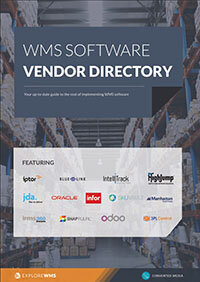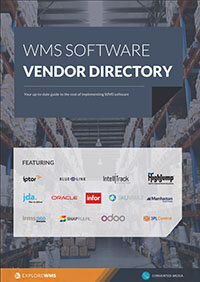Five features a good e-commerce WMS needs
E-commerce offers consumers an interesting combination of advantages. Ease, product variety, and competitive pricing give e-commerce a buying experience totally different than traditional “business”. But after a consumer’s need has been matched to an available product and an acceptable price, what do e-commerce companies have to be good at to prosper? Logistics.
The biggest advantages a physical retail store has to offer are you can take immediate possession of the product with no additional shipping charges. E-commerce companies have to offset those advantages with the quickest possible delivery at the lowest possible cost.
E-commerce has a mirror-image logistics model from brick-and-mortar retail stores. Traditional retail WMS deals with large amounts of product shipped relatively cheaply to a single location, and then sold. In e-commerce, the product is first sold, and then individual shipments are arranged. After the sales transaction – which happens in the virtual world – the only task remaining is to physically deliver the product. Given the dual challenge of needing high reliability in a more complex environment, e-commerce WMS software must meet these challenges.
Use this free WMS comparison tool to find the right e-commerce WMS for your business
Special attention should be paid to these five features:
1. Multiple location
Multiple distribution centers, servicing multiple distribution channels. These are different features, since the DC setup is structural and a configured part of your WMS, while multiple channels deal with how seamlessly your e-commerce WMS is integrated with order entry.
2. Logistics efficiency
Are you able to match the right product with the right carrier to the right destination in the correct amount of time? Are you able to consolidate orders? For any given order, what is the right distribution center for fulfillment? Does your picking strategy support logistics efficiency? Will customers be able to track their packages?
3. Buy and return
E-commerce companies not only must make the buying transaction simple, they must make the return process as painless as possible as well. Can your WMS handle a high volume of returns efficiently? Better yet, can your e-commerce WMS help facilitate a high volume of returns?
4. Multi-country
Web orders can come from any location. Can your system support an order in metric units? Can it handle foreign currencies? Does your shipping documentation capability support exporting?
5. Scalability
Brick and mortar organizations almost always require capital to grow, and therefore, growth is forecasted and planned for. E-commerce companies, on the other hand, can grow simply by becoming more efficient at matching consumer needs with product availability. How big would your business have to get before your WMS system was a constraint?
The choice of WMS is one of the most important strategic choice an e-commerce company can make, since getting a product from inventory to a consumer is what they do. The convenience, the variety, and the transactional ease is all eradicated in the buying experience if the delivery is too long, or too expensive. It’s an interesting challenge.
Free white paper

WMS vendor directory
Save hours of WMS vendor research with this free guide

Featured white papers
-

-

-

WMS requirements template
Over 120 WMS feature ideas to help you build a requirements list and shortlist vendors
Download
Related articles
-

How much WMS software costs and how to set your budget
A complete guide to WMS costs, and how to calculate your budget based on these
-

Mission-critical features of food lot traceability software
What features of food traceability software will help you during a food recall
-

Your complete WMS features and requirements guide
How to gather requirements for a new WMS, and features to look for to meet them

